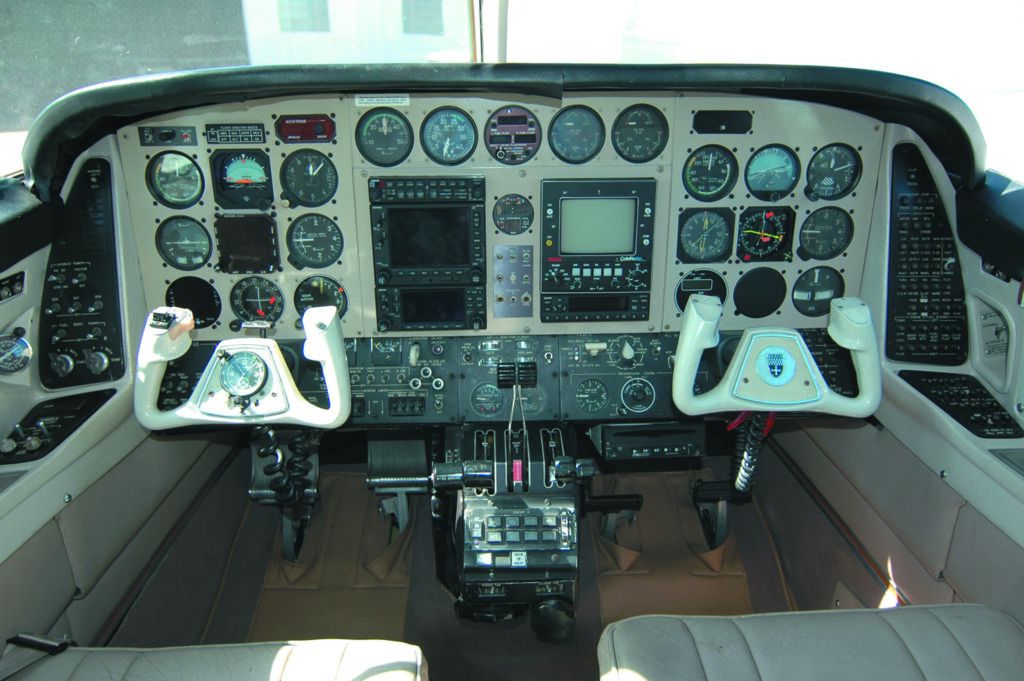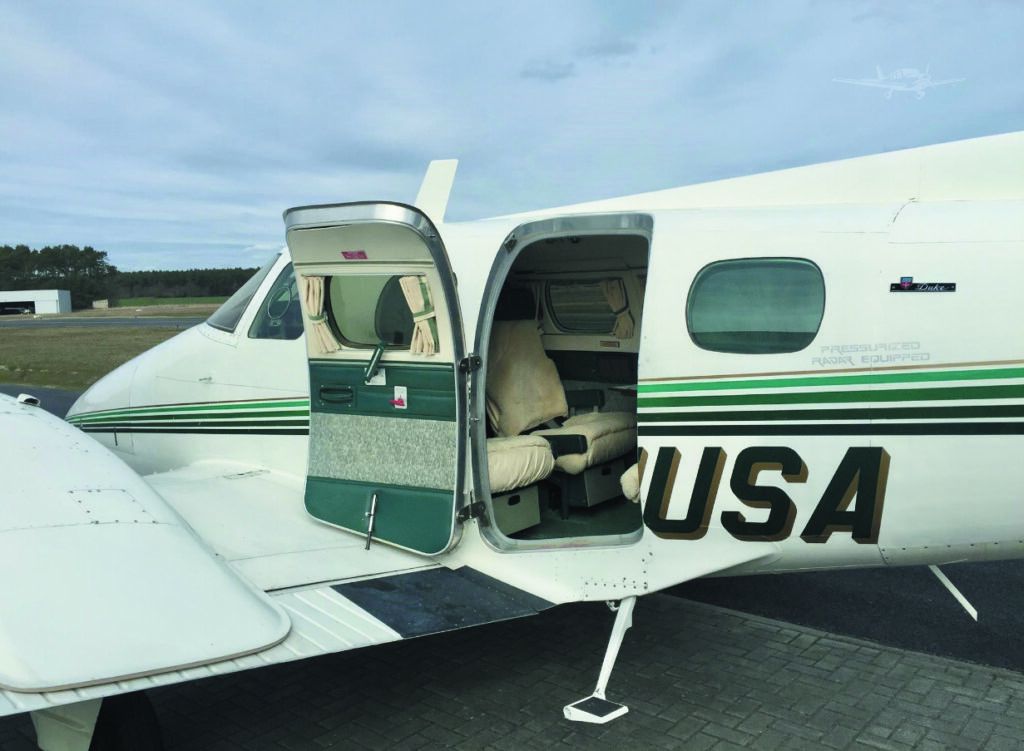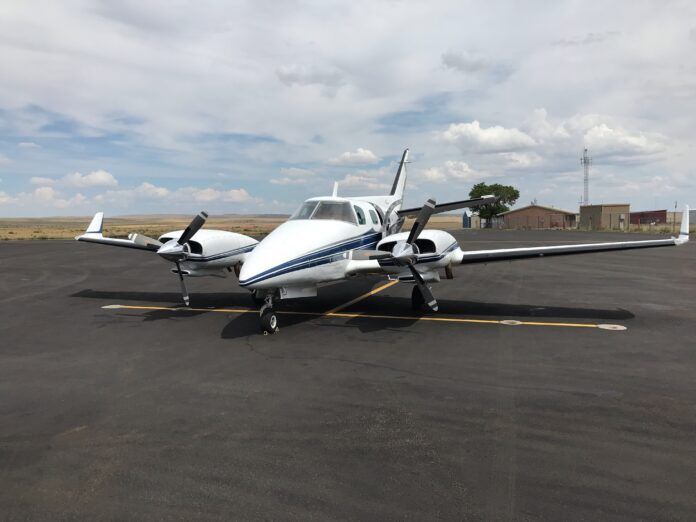Moving up out of a Baron or even a Bonanza, buyers might eyeball the Beech Duke. A step below the King Air, this good-looking pressurized piston twin impresses with its business airplane passenger cabin. Powered by Lycoming TIO-541 engines, a stock Duke isn’t a runway star, but it moves along once it’s flying. With major refurbishments including modern avionics upgrades, aftermarket performance mods and a solid training plan, the Duke is a worthy go-places twin.
Beech Duke: History And Performance
When the Duke hit the ramps somewhere around 1966, the airplane was advanced for its time. In the world of pressurized piston twins, the closest competitors might be Cessna’s 340 and 414, the Piper Navajo and Beech’s own P Baron. The last of the Dukes were 1982 B60 models, which were delivered at around $585,000. These days, a late-model Duke might sell for $250,000, or considerably more with upgrades.
There aren’t a lot to choose from, and while Beech didn’t change the Duke much over the years, there were three models including the straight 60 (sold in 1968 and 1969), the A60 (1970 to 1973) and the B60, introduced in late 1973 with airframe number 247. The major improvement was the fuel capacity, which was bumped up from 202 to 232 gallons in the 1976 models. All told, 596 Dukes were built.
A Duke won’t run with a King Air, but it’ll pass a Baron (while burning more fuel). Owners tell us that realistic max cruise speeds at 24,000 feet and pulled back to 70 percent power are generally 220 to 225 knots for well-rigged airplanes. It slightly edges almost everything in its class, except maybe the Aerostar, which can outrun it by at least 10 knots on less fuel.
Although a stock Duke’s range is pretty limited—its standard fuel tanks hold just 142 gallons—most have optional long-range fuel tanks that hold from 202 to 232 gallons, depending on the model. Top off the optional tanks and you can boost up the manifold pressure and make a four-hour, 900-NM trip with IFR reserves. But this really wasn’t intended to be a short-runway airplane, and owners we talked with say they don’t mess around with anything shorter than 3000 feet. We suggest putting vortex generators on and carefully watching the loading and conditions. Late-model Dukes generally have a useful load of better than 2000 pounds.
Remember daredevil Evil Knievel? Word is that he convinced the pilot of his Duke to land on a short drag strip and the airplane ended up ripping through Evil’s dressing trailer. Classic. On the way out, a stock Duke doesn’t really get into an authoritative climb until around 500 feet or so, but once it’s cleaned up and moving it does well (perhaps better than anything in its class)—hauling up to 24,000 feet on a warm day heavily loaded in around 28 minutes, one pro pilot said of his people-hauling Duke.
Pay attention to the single-engine ops portion of your transition training. The Duke’s performance when one engine quits is around 300 FPM at sea level when flown and rigged properly. Again, VGs really help. The airplane should be easy to fit into traffic flows for landing, with a generous 175-knot gear extension speed. There’s also an aftermarket spoilers mod, which helps even more—especially letting down from high altitudes while keeping the power on.
When the autopilot isn’t flying (pay attention to the performance of older systems during prebuy), pilots praise the Duke as being a rock-solid IFR platform. “ILS and LPV approaches are like flying on rails,” one told us. Predictable and docile, the Duke trims up well and holds its airspeed, and pitch changes are minimal when the flaps or gear are extended.
Wrenching

While maintenance shops won’t feel sorry for anyone rolling up to their hangar in a Duke, most happy owners correctly point out that the key to keeping bills down, and ensuring that the Duke’s engines reach TBO, is to properly operate and maintain the airplane. This is not an airplane for getting behind on maintenance. And woe to those who got a “good buy” on a used Duke that was not properly operated or maintained. We’ve witnessed that expensive mistake more than once.
Take it to a shop that knows the Duke; a good resource for support advice is the Duke Flyers Association (www.dukeflyers.org). There is a lot to properly maintaining a Duke, and perhaps at the top of the list is treating the 380-HP Lycoming TIO-541 engines with kid gloves. You’ll spend well north of $120,000 on a pair, and TBO is 1600 hours. The 60, A60 and 1974 B60 models had cast-iron turbo housings that tended to crack from the heat. This was no small problem in flight, since a turbocharger failure in a pressurized airplane can lead to partial or total cabin depressurization. Stainless blowers on post-1974 airplanes solved the issue.
One common service issue might be with the exhaust. The older Model 60, in particular, had short exhaust stacks that lead to flap corrosion. The condition of the exhaust pipes also should be checked at the rear by the slip joints. Various magneto, landing gear, drive train and wheel problems also were mentioned in SDRs and owners’ reports, so make sure these items receive a thorough going-over on a prepurchase inspection. Check the ADs, too. Beech issued mandatory service bulletins in 1989 to check the airplanes’ horizontal stabilizers and elevator hinge attachment areas. The bulletin affects certain Duke 60, A60 and B60 series models. Beech said an inspection should take two techs 12 hours to perform.
“After 20 years of working on nothing but Dukes, it’s rare to see engines removed at TBO. The norm for us and the industry is more like 1900 to 2000 hours, and they are usually still running strong,” Duke expert Glenn Adams at Royal Air (www.royalair.com) told us. But that’s only if they’re well maintained and operated properly. Adams said the best Dukes fly 150 or more hours per year. Dukes that sit don’t do well. Expect to spend between $6000 and $13,000 for typical annual inspections on well-maintained Dukes.

Beech Duke Safety, Market
Sifting through 40 years of NTSB wreck reports, we found only 72 for the 60-series Duke. That’s low, but remember, there were less than 600 built—so nearly one-sixth of the fleet has been involved in a reportable accident. The majority of the mishaps (15) involved engine stoppages or fire due to maintenance that was too long deferred, done poorly (an unsecured fuel line chafing on an exhaust manifold, improperly torqued cylinders and a loose fuel line fitting, to name a few) or nearly criminally wrong (automotive components in turbochargers, prohibited sealant between engine case halves).
The second most common wreck scenario is pilots running a Duke out of fuel. Some just never learn. One Duke owner reported engine problems, so he did the right thing by landing and seeking maintenance. A shop dropped everything and started working on his airplane. He got impatient, told them to stop, put in some fuel and departed. He ran the tanks dry—something he had done once before in that airplane. Five pilots lost control in IMC, a number well above what we expect to see in an airplane of this capability.
As for the current market, you’ll pay a hefty premium for well-cared-for and refurbished Dukes—significantly more than the published Aircraft Bluebook in early 2023, where, as one example suggests, a 1979 B60 retails for around $200,000. Before making a deal on any Duke, get an insurance quote. And perhaps at the top of the food chain is the Royal Turbine Duke conversion. With a couple of 525-HP Pratt PT6A-35 turboprops, a B60 will smoke along at 290 knots at FL270. You’ll pay as much as $1.3 million for those bragging rights.
For more on the used Beech Duke market and other used model reports, visit Aviation Consumer and the Used Aircraft Guide feature that runs in every issue.




































Most pilots will express affection for whatever airplane model they are currently flying… It’s like asking a guy how he likes the wife or girlfriend when she’s standing next to him.
When my friend and sometimes-employer (a former Baron owner) wanted to buy a Duke I tried to discourage him from it, but the price and looks of that airplane was apparently irresistible. So after he bought it, I asked another experienced pilot who had plenty of Duke experience what I should know before flying it. He warned me about any runway less than 5K’
He was right! The Duke is a “Road Hog”! And some models have rare alternators that can be expensive to repair. (Central Aviation and Equipt at Hobby Airport overhauled them for us and told us the only other current user of that particular alternator was NASA on some special equipment and the Fuji Blimp …to run the illuminated billboards!)
Dukes can suffer flap corrosion, stabilizer and elevator problems, heated (electrical) windshield issues. A hundred-grand can be spent on a neglected Duke and it STILL be Un-airworthy!
The advertised cruising speeds and the real-world speeds are “hypothetical”. By the time you get that airplane to high enough altitude for a decent TAS….You’re outta gas and gotta come back down!
Out of 4 Duke pilots I know…. NONE of them would recommend anyone to buy a Duke who wants to use it for actually going places.
But looking at it while it’s sitting on the ramp…?? It’s a beautiful airplane!
Got to fly right seat in one. 2900′ runway. The pilot kept in on the ground until after single engine climb out speed. Safe to say we used a LOT of runway. My last flight in that airplane.
88 gals/hr on takeoff, 66 gals/hr on climb, 42 gals/ hr for cruise. TAS at fl 230 is 215. No complaints on leg length. Very comfortable inside.
There is a wing bolt inspection/ replacement ad. Never found anything wrong.
You do want to get the firewall forward central lube camshaft stc to prevent lifters to prevent from being eaten.
Duke is a great flying aircraft and as an owner/operator I’m a happy user. It’s not a beginner’s plane and it takes sound instruction to fly it well. 3000 ft strips are not a problem if you have been trained. Without that, it can be a challenge. A great step up aircraft with range, payload, speed. Maintain it, and it serves you well. Don’t, and you will not have a good experience.
The B60 piston, or B60T turbine variant, is an aircraft which requires type specific training with an emphasis on systems knowledge and operating techniques. Those who relate the aircraft requires excessive runway lengths, or produces anemic single engine climb performance, have simply not flown with a properly trained Duke aviator. If you have a business need to operate an all weather business aircraft on 500-600 nm trips, the B60 / B60T deserves a hard second look. But first join the Duke Flyers Association and survey folks who own and operate these fine machines. Objective data from current operators will dispel any doubts posted by the usual internet experts.
Larry failed to mention that Lycoming does not support the TSIO 541. There are no factory reman engines.
I owned P211, were replacing cam and lifters every 400hrs
I flew the 56TC Baron for a few k hours, a beast whose torque you had to watch on takeoff. It had the Lycoming TIO-541 Duke engines. Main problem, with the potential to kill, was the more than right-angled turn of the exhaust outlet, which would bulge and potentially flame if it got too hot. Part of the preflight check.
We would take that thing to 30k feet unpressurized which involved 30 min of preflight oxygen breathing before departure. Fun times indeed.
How’s parts availability on a plane out of production for 40 years? That would seem to be a big vote in the No column.
I really wanted one, until the owner of one let me aboard, and stated that he flight planned 48 gph. Yikes. I’m sure he was a bit heavy on the gas, but still.